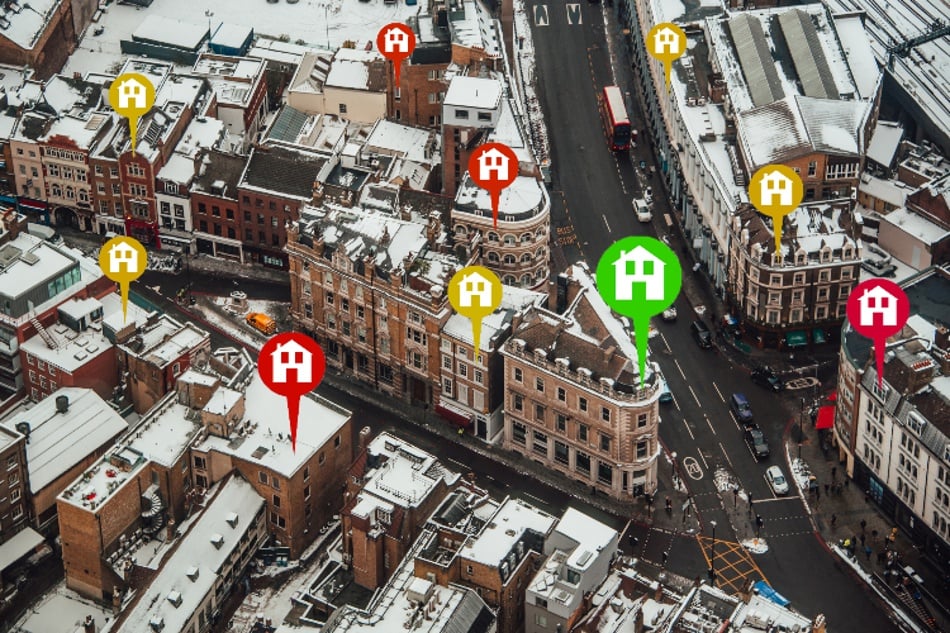While owning a short-term rental (STR) property can potentially be very profitable, it’s important to conduct a thorough analysis before investing. There are different demand drivers for STRs and unique costs to consider as well.
In this article, we’ll look at key factors to consider when performing an STR analysis, along with several resources for finding up-to-date data on the business.
Key takeaways
- An STR analysis takes into account factors such as location and demand, seasonality and occupancy, along with revenues, expenses, and appreciation.
- Metrics used to measure STR property performance include ADR, RevPAR, and gross annual revenue.
- Some of the best resources for finding industry data are AirDNA, Airbtics, and AllTheRooms.
How to analyze an STR
Successfully owning and operating an STR property depends on a number of factors, some of which are different from long-term rentals. Here are 8 things to take into account when performing an analysis.
Location
STRs across the country are used by both leisure and business travelers as alternatives to small, generic hotel rooms. However, there’s been a dramatic change in the locations people are choosing to travel to over the past 2 years. According to AirDNA’s 2022 Short-Term Rental Outlook Report, guests are increasingly looking for STRs in:
- Small cities and rural towns
- Destination locations near mountains and lakes
- Coastal resort areas
- Midsized cities
Demand
AirDNA also predicts that the demand for STRs will continue to grow due to factors such as rising employment levels, increased consumer spending, and strong GDP growth. Key demand metrics include:
- Available listings up 15.0% year over year to 1,227,218 (2022 vs 2021)
- Demand for STRs increasing by 14.1% in 2022 vs 2021
- Occupancy at 59.8%, an increase of 6.3% compared to 2019
- Average daily rate of STRs $249.64 versus $213.67 in 2019
- Revenue per available room (RevPAR) growing to $149.41 versus $114.26 in 2019
The demand drivers for STRs can be different from property occupied long term. Tourist attractions, local amenities like restaurants and shopping, transportation, and year-round popularity all can impact the demand.
Seasonality
Some STR properties are located in areas with high and low seasons. For example, a beachfront home may attract more visitors during the summer, while an STR in Aspen may see tremendous demand when ski season begins. On the other hand, STRs in high-demand markets like Kissimmee, FL; Orlando, FL; and Galveston, TX may benefit from strong demand throughout the year.
Property
The type of property also can impact the demand. As AirDNA notes, in the current market larger homes with 2+ bedrooms are booked more frequently, often by families or guests looking for a flex-work stay.
When it comes to the type of property, many guests today are looking for a unique experience. Property types recording an increase in unique stays of 20% or more include tiny houses, nature lodges, and buses.
The quest for one-of-a-kind experiences can quickly change from one season to the next. Vacation rental industry statistics from iPropertyManagement show that in (year), 52% of vacation buyers purchased detached single-family homes, with the majority of rentals located in resort or rural areas and small towns.
Occupancy
When a home is rented to a tenant long term, the occupancy rate is 100% barring anything unforeseen. In the STR business, occupancy is calculated by dividing the number of nights a home is rented by the number of nights available.
For example, if an STR available full time has 30 available nights each month and 19 nights are booked, the occupancy rate for that month is 63%.
While that occupancy rate may not sound very high, there may be enough revenue to pay the mortgage and more. According to Realtor.com, investors buying in the top 10 STR markets may be able to generate enough monthly revenue to pay for the mortgage with less than 16 days of occupancy.
Another occupancy-related metric is average length of stay (ALOS). ALOS is easily calculated by dividing the number of booked nights by the number of unique bookings. For example, if an STR is booked for a total of 18 nights in a month by 5 different guests, the ALOS would be 3.60.
Revenue
Revenue performance for STRs is measured using metrics like ADR, RevPAR, and gross annual revenue:
Aaverage daily rate (ADR) is calculated by dividing the gross revenue collected in a time period by the number of days the home was rented. If an STR was booked for 15 days in a given month and the gross rental revenue was $4,500, the ADR would be $300.
Revenue per available room (RevPAR) is a metric that factors in the occupancy rate by measuring the revenue generated per available room night. For example, if an STR generates a gross revenue of $4,500 in a month that has 30 days, the RevPAR would be $150.
Gross annual revenue is the total income generated by an STR in a specific time period. According to AirDNA, the average annual revenue from STRs listed full time grew to $56,000 by the end of 2021, the highest level ever.
Factors that affect how much revenue an STR generates include:
- How well the property is marketed
- If the home is easy to book online
- Positive versus negative guest reviews
- Number of people the property can host
- Pet-friendliness
- Amenities such as a pool, extra space, or children’s playroom
- How well the kitchen and bathroom are stocked
- Full-time availability versus use by an owner, especially during the peak season
Expenses
While nightly revenues often are much higher in STRs versus homes rented full time, they also have unique operating expenses to consider. In addition to normal costs such as property management, maintenance and repairs, and property taxes and insurance, some expenses to research include:
- Booking fees paid to short-term listing platforms such as Airbnb or Vrbo
- Utilities paid by the owner, including electric, water, internet, and cable TV
- Supplies such as towels and linens and bathroom and kitchen items
- Full cost of furnishing a home with furniture and decor to generate a higher ADR and receive 5-star reviews
- Cleaning costs also are higher because STR guests turn over much more frequently, with short stays of 7 days or less accounting for the majority of bookings, according to iPropertyManagement.
Appreciation
In addition to potentially profiting from STR income, investors also aim to make money over the long term with property appreciation. When analyzing a real estate market for STR property investment, many investors look at historic appreciation trends to help them predict possible future appreciation.
You can use Zillow to compare home values year over year to help you forecast markets that have the portential to continue growing.

Where to find STR data
As demand for STR property grows, investors are using real-time data and market intelligence to keep occupancy up and revenues flowing. Here are 7 sources for finding data, listed in alphabetical order:
- Airbtics analyzes data from 8 million rentals, 10 million reviews, and 2 billion nights a week to help investors build their STR business. Visit the Airbtics website.
- AirDNA monitors activity on over 10 million properties around the world in 120,000 global markets and is the #1 leading platform for STR intelligence, according to the AirDNA website.
- AllTheRooms promises to offer everything an STR investor needs, including market intelligence, property scores, and competitive intelligence to help investors identify areas of improvement and competitive gaps. Visit AllTheRooms.
- Beyond is an STR revenue platform offering a demand-driven pricing tool, extensive market data, and a booking engine paired with sites such as Airbnb and Vrbo. Learn more about Beyond Pricing by visiting the website.
- Key Data Dashboard combines historical data with forward-looking data to provide market intelligence on the hospitality industry to professional vacation rental managers, tourism organizations, and investment funds. Visit the Key Data Dashboard website.
- PriceLabs claims to help owners of STR property increase revenue with data-driven pricing based on key metrics, such as market supply and demand, seasonal and day-of-week trends, and special events and holidays. Learn more at the PriceLabs website.
- Rabbu is a full-service platform that seeks to assist investors in realizing higher yields on STR stays. The service works with short-term single family rentals and multifamily homes and lets investors get an instant estimate of STR returns by entering a property address. Visit Rabbu.
How to create an STR analysis spreadsheet
A basic spreadsheet program can be used to create a spreadsheet to analyze STR property. The example below includes data for illustration purposes only, and the spreadsheet template can be downloaded for free both in an Excel or Google Sheets format and customized for individual use.
An alternative to using a spreadsheet template is to sign up for a free account with Stessa, a Roofstock company. Software from Stessa is specifically designed for real estate investment properties.
![stessa-mac-mockup-2800-2500[4]](https://learn.roofstock.com/hs-fs/hubfs/stessa-mac-mockup-2800-2500%5B4%5D.jpg?width=2800&height=2500&name=stessa-mac-mockup-2800-2500%5B4%5D.jpg)
Final thoughts
Before purchasing any real estate investment, it’s important to conduct a thorough analysis. Investing in an STR is different from buying a property rented to a tenant long term. Some of the best markets may be in small and rural towns, destination locations, and coastal resort cities.
While some reports state that gross revenues from STRs may average about $250 per night, operating expenses also are higher. That’s why it can pay to purchase in a city with high occupancy levels and year-round demand for STR property.









